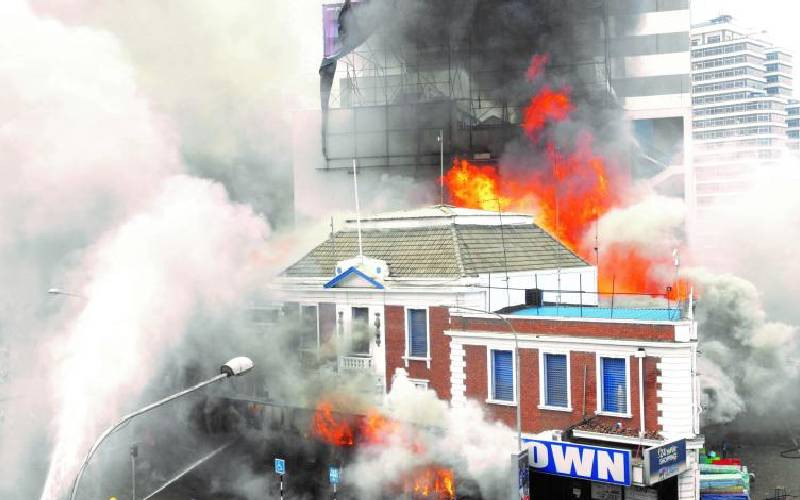What is mitumba? Literally speaking, mitumba means bundles in Swahili. In Kenyan parlance, mitumba refers to the second-hand clothes whose most famous marketplace is Gikomba.
Most of those clothes are in reality donations from the US and Europe. That is why Kenyans sometimes refer to them cheekily as ‘dead mzungu clothes.’ Such teasing aside, we need to critically analyse the mitumba value chain so that we can verify whether their traders and Kenyan consumers are the primary beneficiaries of this sector, or whether a few well-heeled cartels reap the lion’s share of the sector’s benefits. In the 1970s and 1980s, when I was growing up, my mother could not go to Gikomba or Toi market to buy secondhand clothes for me and my siblings. At the time, the mitumba sector was practically non-existent. The clothes our mother bought for us back then or received as donations were mostly made in Kenya.
As a result, Kenya’s garment industry employed at least 500,000 workers. That number has since shrunk drastically to less than fifty thousand. Meanwhile, the mitumba sector now employs approximately two million Kenyans. I appreciate these hard-working traders who support their livelihoods from a cartel squeezed space and network.
Going forward, Kenya should rebuild its cotton, textile and apparel sector because it can support many more livelihoods than the mitumba sector. If our textile sector provided jobs for 500,000 Kenyans more than 30 years ago, then it can provide jobs for the 6.4 million youth said to be multi-dimensionally poor. Accordingly, I suggest that we rebuild innovatively, incrementally and profitably.
In March 2016, East African Community (EAC) Heads of State declared their firm intention to strengthen the region’s textile industry. They issued a communiqué that they would progressively phase out importation of used clothing.
Unfortunately, this communiqué never saw the light of day due to immense pressure from the US. An American lobby of used clothing exporters reacted angrily to the communiqué. Known as the ‘Secondary Materials and Recycled Textiles Association,’ the group lobbied the US to respond to East Africa’s stand by threatening expulsion from the American Growth Opportunity Act (AGOA). The main reason behind America’s firm response was the potential loss of 40,000 low-skill American jobs that included sorting and packing the second-hand clothes exported to Africa. Evidently, American jobs are untouchable and are protected at all cost by American policy makers.
Our policy makers should follow suit in creating and protecting Kenyan jobs at all cost. It would therefore seem that they need to protect the mitumba sector, because after all, it provides 2 million jobs for Kenyans. However, developing the cotton, textile and apparel sector would fast-track our industrialisation and regional integration agenda even as we provide more and higher quality jobs.
Kenyan EPZ companies make hundreds of thousands of stylish, affordable clothes for American apparel companies. One of the American companies that benefit from Kenyan-made clothes is the departmental store chain, TJ Maxx. Ironically, many of the clothes exported from Kenya to that store and other similar ones in the US end up in Kenya after a few months or years, as second-hand clothes.
Policy incentives
What Kenyans are interested in is affordability and quality, two attributes that the mitumba clothes possess. Appreciating that many of those clothes are made in Kenya anyway, the Cabinet needs to consider and guide implementation of most transformative policy incentives on Textile Acceleration Plan as presented by the Industrialisation ministry.
In 2016, after the communiqué from regional leaders, Rwanda soldiered on and banned secondhand clothes from its market. Consequently, the US withdrew Rwanda’s AGOA benefits of exporting apparel duty-free to the US. One year later, President Kagame made it clear that Rwanda would not falter. In June 2017, he said: “We have to grow and establish our industries. This is the choice we find that we have to make. We might suffer consequences. Even when confronted with difficult choices, there is always a way.”
In Kenya, manufacturing is one of the four pillars of the Big Four agenda. We should therefore radically and most urgently revamp our cotton, textile and apparel sector so as to harness its immense potential. The time to act is now, and the hand of our dear President is requisite.
Ultimately, our nation’s global competitiveness is anchored on our capacity to reinvent and strengthen our local industry as part of the Buy Kenya, Build Kenya initiative once we think and act green.
–The writer is founder and chairperson, Green Africa Foundation. www.isaackalua.co.ke
 The Standard Group Plc is a multi-media organization with investments in media
platforms spanning newspaper print operations, television, radio broadcasting,
digital and online services. The Standard Group is recognized as a leading
multi-media house in Kenya with a key influence in matters of national and
international interest.
The Standard Group Plc is a multi-media organization with investments in media
platforms spanning newspaper print operations, television, radio broadcasting,
digital and online services. The Standard Group is recognized as a leading
multi-media house in Kenya with a key influence in matters of national and
international interest.
 The Standard Group Plc is a multi-media organization with investments in media
platforms spanning newspaper print operations, television, radio broadcasting,
digital and online services. The Standard Group is recognized as a leading
multi-media house in Kenya with a key influence in matters of national and
international interest.
The Standard Group Plc is a multi-media organization with investments in media
platforms spanning newspaper print operations, television, radio broadcasting,
digital and online services. The Standard Group is recognized as a leading
multi-media house in Kenya with a key influence in matters of national and
international interest.









